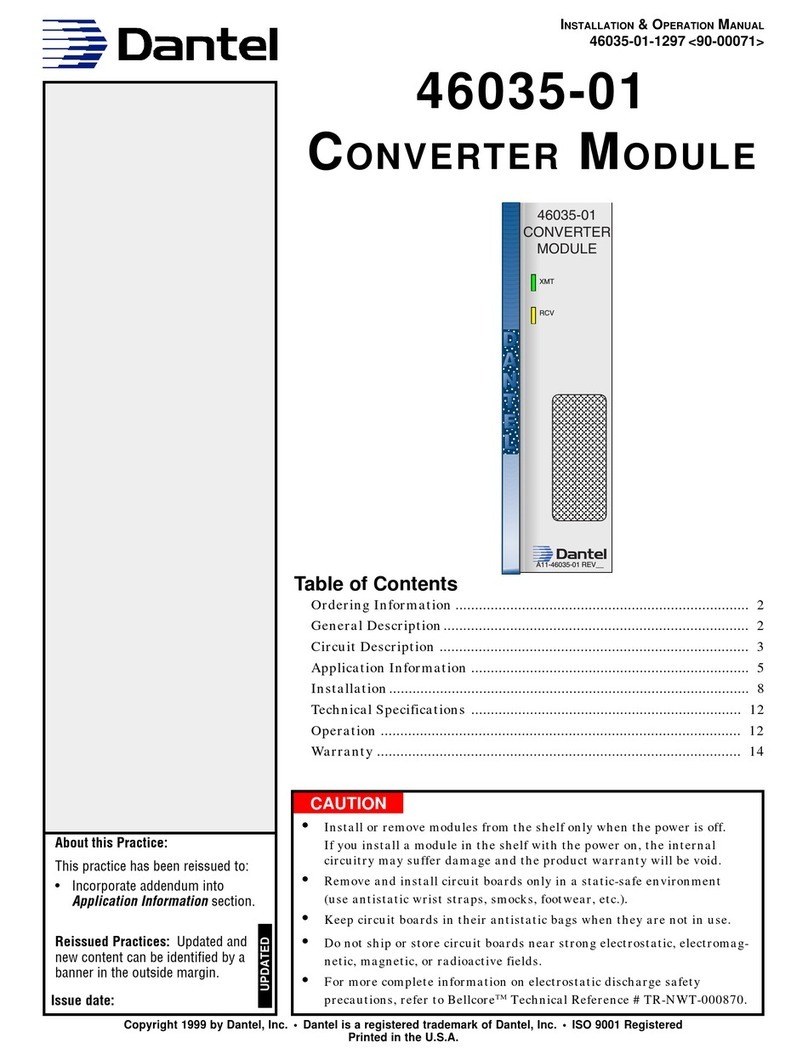
PAGE 6 44020-0998<90-00001>
High Frequency Reject Filter
This filter is a simple RC low pass filter that rolls off 6 dB per
octave at approximately 7 kHz. This filter reduces excessive
noise above 28 kHz that could interfere with the 56 kHz internal
sampling frequency of the DTMF receiver IC .
DTMF Receiver and Output Buffers
The DTMF receiver is a monolithic CMOS integrated circuit
that combines precision active filters and analog circuits with
the control logic for decoding DTMF tones.
Upon input of a valid tone pair, the receiver verifies that the
tones are present for a minimum detection time (no greater than
40 ms). The receiver then puts out the corresponding code on the
data outputs (D1, D2, D4, and D8) and pulls the DV output high
which indicates valid data.
The DV remains high until a valid pause in the input occurs (no
greater than 40 ms). When DV goes high, a timer circuit puts a
40 ms positive pulse on the strobe output (pin 38).
The strobe output buffers through FET source followers. The DV
also drives a buffer that operates a front panel LED for visual
decoder monitoring. The data output buffers through FET
source followers to the output pins.
The DTMF receiver can be optioned for fourth-column disable
(1633 Hz). Strap 12 to disable, and strap 16 to enable. A ground
at the disable input (pin 19) inhibits decoder operation.
Auxiliary Output and Latch Circuit
The DTMF tones "*" and "#" or A and C decode separately
from the data outputs for auxiliary functions.
The selected tone pairs route through FET source followers.
When the selected code appears at the data outputs and DV
(strobe) goes high, the selected outputs become true (ground).
The outputs can be latched or remain true as long as DV re-
mains high. Clear latches with an external clear (ground) or an
opposite selected tone pair.
The FET source follower inputs can drive relay coils up to
-56 VDC at 200 mA.
Power-Up Clear
Pin 39 provides a power-up clear output. This output switches to
ground for one second when you apply power to the module. This
output clears associated subassemblies or 440 CMS modules.
Ringing Generator Control Circuit
This circuit enables the ringing generator when a phone rings in
a 440 CMS.
CIRCUIT DESCRIPTION
CONTINUED . . .




























